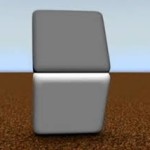Your brain during orgasm – and how it relates to performance anxiety, by Max Plenke
Article by Max Plenke, featured in .Mic
“You are your own worst enemy in the bedroom. (…) You can’t shut off a certain part of your brain. (…)
To understand performance anxiety, you first have to understand what orgasms do to the body — and why reaching them is so easy when we’re alone, but often harder with a partner.
When you orgasm, it takes near-total control of your brain and nervous system (…) from head to toe.
(…) activation in the nucleus accumbens, the pleasure center of the brain, [and] the hypothalamus, which excretes oxytocin,(…) in the cerebellum, which is involved in muscle tension; we see activation in the insular and cingulate cortex, which are interesting because those same areas react to pain, so it may be inhibiting pain in its processes; we see activation in the amygdala, which increases heart rate and blood pressure and sweating. They’re all activated, and they’re all activated maximally.”Continue reading→
Apes’s visual illusions
Audrey E. Parrish, Sarah F. Brosnan, and Michael J. Beran published a comparative investigation of the Delboeuf illusion in humans and a couple of monkeys species. Theis research bring evidence of relative size perception illusion across those species.
Parrish and Beran’s previous research on how both humans and chimpanzees misperceive food amounts based on plate size target a similar topic.
Interestingly, in the case of the chimpanzees studies it was possible to observe not only a visual illusion. Feeding and consumption behavior changed accordingly as well. It is not out of the ballpark to characterize greed and accumulation in excess resulting in illusory perception. Perhaps understanding better the foundation of such illusions help humans distancing our behaviour in a more conscious fashion.
3D qualitative spatial representation
Alex Burmester’s article on How do our brains reconstruct the visual world provides a short introduction of brain perception process. Selective processes, visual attention, and inattentional blindness are key to understand how our mind build an schematic version of the environment as images in our minds.
Taking a more conceptual – and from an opposite side – tackle into the problem is the paper by Till Mossakowski and Reinhard Moratz on Relations Between Spatial Calculi
About Directions and Orientations. They describe how relation algebras help us understand the transition from qualitative approaches of the environment to relative direction.
Linking the two is the effort to understand how we see. Our brain combines each eye receives a limited, partially colourless signals at the retina into a seemingly continuous 3D experience. Something that is very handy, to say the least.
This would not be possible if brains were not trained to continuously construct this environment. There is much to learn from this process about our subjective stance towards objects and our consciousness.
“A movement in the making”
BY John Hagel, John Seely Brown & Duleesha Kulasooriya
” “Making”—the next generation of inventing and do-it-yourself—is creeping into everyday discourse, with the emerging maker movement referenced in connection with topics ranging from the rebirth of manufacturing to job skills development to reconnecting with our roots. As maker communities spring up around the globe, a plethora of physical and virtual platforms to serve them have emerged—from platforms that inspire and teach, to those that provide access to tools and mentorship, to those that connect individuals with financing and customers. (…) Continue reading→
“Whole Brain Emulation: Reverse Engineering a Mind” By Randal A. Koene
As fiancés know, setting a date is a double-edged sword. Goals seem more tangible and apt to plan around, but unkept promises usually end with someone looking foolish.
Pushing the envelope and making plans about the future is what was intended at Among the high-profile thinkers speaking at Global Future 2045: Towards a New Strategy for Human Evolution, Randal A. Koene delivered a speech on brain emulation:Continue reading→
men at work – for how long
Check this study on “THE FUTURE OF EMPLOYMENT: HOW SUSCEPTIBLE ARE JOBS TO
COMPUTERISATION?” by Oxford Martin’s Carl Benedikt Frey and Michael A. Osborne.
And some say “The Age of the Robot Worker Will Be Worse for Men” – I hope men acceptit as they always asked women to accept sexist culture.
Walt Whitman’s “A noiseless, patient spider” – animated
A NOISELESS PATIENT SPIDER
A noiseless, patient spider,
I mark’d, where, on a little promontory, it stood, isolated;
Mark’d how, to explore the vacant, vast surrounding,
It launch’d forth filament, filament, filament, out of itself;
Ever unreeling them — ever tirelessly speeding them.
And you, O my Soul, where you stand,
Surrounded, surrounded, in measureless oceans of space,
Ceaselessly musing, venturing, throwing, — seeking the spheres, to connect them;
Till the bridge you will need, be form’d — till the ductile anchor hold;
Till the gossamer thread you fling, catch somewhere, O my Soul.
read more in Maria Popova’s Brain Pickings
Invisible Computer Code Runs Your Life
Video works well as a teaser for the rather long, good read “What is Code” by Paul Ford
Robots being bullied
This video show kids being bullies in a mall – victim this time was a robot.
It may relate to another recent case of a robot being vandalized in his hitchthiking trip.
For the time being such experiments are very useful to bring light to human behavior. Let’s say someone argues that as many other human behaviour this might be one society opts to discourage. And as in many other cases, way to set limits is to grant victims rights not be be molested.
As we are likely to see such events recurring more often, robot rights defendants may have a growing number of examples on their side.







